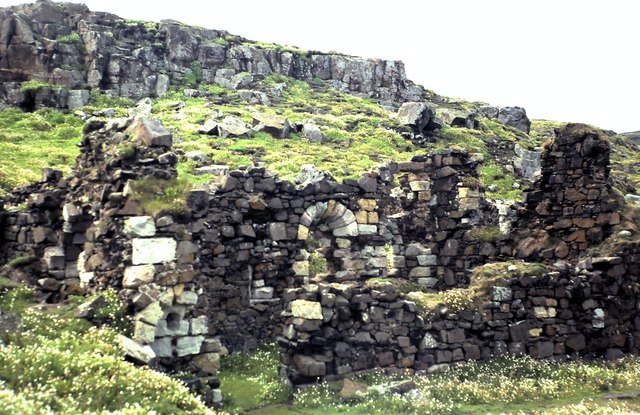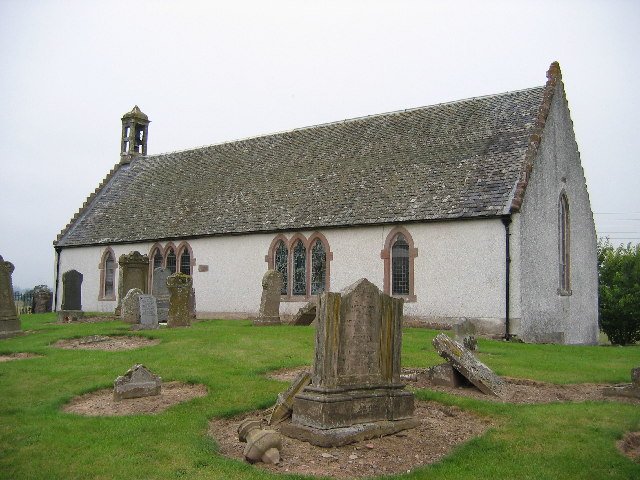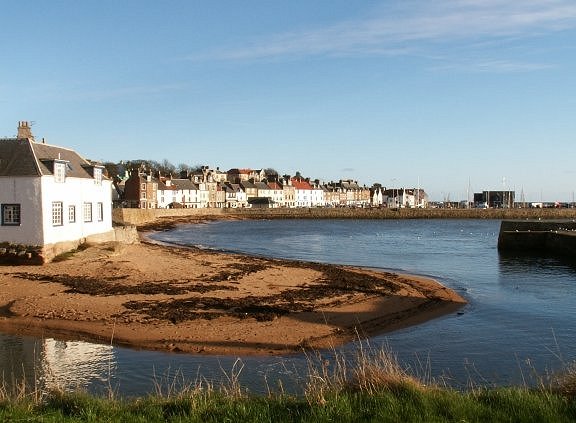|
Ethernan
Ethernan (or Ithernan, Etharnan, Itarnan) was a 7th century Scottish martyr and saint. Life and death Almost nothing is known about Ethernan's life. It has been speculated that he may have been a monk of Iona due to his death being mentioned in the Annals of Ulster. In 669 the Annals of Ulster record the following entry: ''Itarnan et Corindu apud Pictores defuncti sunt.'' This has traditionally been translated as "Ethernan and Corindu died among the Picts". However, Thomas Clancy has analysed the use of the word "apud" in Hiberno-Latin chronicles and concluded that the correct translation is "Ethernan and Corindu were killed by the Picts", making Ethernan and Corindu both martyrs. Clancy also writes that Ethernan and Corindu may have been "Gaels who died in foreign lands, but neither name is well known in Ireland, and both may rather be Pictish". He may have been a monk at the Isle of May monastery rather than Iona, since he is thought to be buried in the monastic cemetery ther ... [...More Info...] [...Related Items...] OR: [Wikipedia] [Google] [Baidu] |
Adrian Of May
Saint Adrian of May (sometimes given as "Magridin") (d. 875) was a martyr-saint of ancient Scotland, whose cult became popular in the 14th century. He is commemorated on 3 December. He may have been a bishop of Saint Andrews. Life and martyrdom Little is known of the life of this Scottish saint and martyr. He is held by some to have been an Irish monk and bishop, with the Gaelic name of Ethernan, who, though he might have been the Bishop of St. Andrews, was drawn to remote locations and had built a series of monasteries and hermitages on the Isle of May (which is out to sea in the Firth of Forth) and along the coast of Fife. Later he withdrew from his see of St. Andrews due to the invading Danes and took refuge on the island. What is known is that about A.D. 875, marauding Vikings invaded the island of May. They then slaughtered the entire population of the monastery, traditionally numbered at six thousand six hundred. The island was then abandoned for centuries. In 1145, King ... [...More Info...] [...Related Items...] OR: [Wikipedia] [Google] [Baidu] |
Isle Of May
The Isle of May is located in the north of the outer Firth of Forth, approximately off the coast of mainland Scotland. It is about long and wide. The island is owned and managed by NatureScot as a national nature reserve. There are now no permanent residents, but the island was the site of St Adrian's Priory during the Middle Ages. Most visitors to the island are daytrippers taking the ferry from Anstruther in Fife, although up to six visitors can stay at the bird observatory, usually for a week at a time. The only way to get there is by ferry; the journey takes 45 minutes from the small harbours of Anstruther and Crail, and also from North Berwick. As of 2015, around 11,000 people visit the island each year.The Story of the Isle of May National Nature Reserve. p. 23. The island is closed to visitors from 1 October until Easter to prevent disturbance to the large number of seal pups. The Scottish Seabird Centre at North Berwick has two live cameras on the island, w ... [...More Info...] [...Related Items...] OR: [Wikipedia] [Google] [Baidu] |
Rodney's Stone
Rodney's Stone is a two-metre high Pictish cross slab now located close on the approach way to Brodie Castle, near Forres, Moray, Scotland. It was originally found nearby in the grounds of the old church of Dyke and Moy. It is classed as a Class II Pictish stone, meaning that it has a cross on one face, and symbols on the other. On the symbols face, at the top, are two fish monsters; below is a "Pictish Beast", and below that a double disc and Z-rod. On the cross face there is a cross and some animals. The stone is most notable, however, for its inscription, which is found on both of the sides and on the cross face. It is the longest of all Pictish inscriptions, and like most Pictish inscriptions, is written in the Ogham alphabet. Much of the inscription is weathered, but it does contain the Pictish name Ethernan (a prominent Pictish saint), written as "EDDARRNON". It is a scheduled ancient monument In the United Kingdom, a scheduled monument is a nationally important ar ... [...More Info...] [...Related Items...] OR: [Wikipedia] [Google] [Baidu] |
Madderty
Madderty is a village in Strathearn, Perth and Kinross. It lies on the former railway line connecting Perth and Crieff. The Gask Ridge and its Roman road lie to the south and the remains of Inchaffray Abbey to the north. Madderty is mentioned in a charter of about 1200, at which time there was a church dedicated to Saint Ethernan in the village. The prominent agricultural zoologist Dr Daniel MacLagan FRSE Fellowship of the Royal Society of Edinburgh (FRSE) is an award granted to individuals that the Royal Society of Edinburgh, Scotland's national academy of science and letters, judged to be "eminently distinguished in their subject". This so ... (1904-1991) was born on Williamstone Farm here and later ran the farm.https://www.rse.org.uk/cms/files/fellows/obits_alpha/maclagan_daniel.pdf References External links Gazetteer for Scotland Villages in Perth and Kinross {{PerthKinross-geo-stub ... [...More Info...] [...Related Items...] OR: [Wikipedia] [Google] [Baidu] |
Scottish People
The Scots ( sco, Scots Fowk; gd, Albannaich) are an ethnic group and nation native to Scotland. Historically, they emerged in the early Middle Ages from an amalgamation of two Celtic-speaking peoples, the Picts and Gaels, who founded the Kingdom of Scotland (or '' Alba'') in the 9th century. In the following two centuries, the Celtic-speaking Cumbrians of Strathclyde and the Germanic-speaking Angles of north Northumbria became part of Scotland. In the High Middle Ages, during the 12th-century Davidian Revolution, small numbers of Norman nobles migrated to the Lowlands. In the 13th century, the Norse-Gaels of the Western Isles became part of Scotland, followed by the Norse of the Northern Isles in the 15th century. In modern usage, "Scottish people" or "Scots" refers to anyone whose linguistic, cultural, family ancestral or genetic origins are from Scotland. The Latin word ''Scoti'' originally referred to the Gaels, but came to describe all inhabitants of S ... [...More Info...] [...Related Items...] OR: [Wikipedia] [Google] [Baidu] |
Pilgrim
A pilgrim (from the Latin ''peregrinus'') is a traveler (literally one who has come from afar) who is on a journey to a holy place. Typically, this is a physical journey (often on foot) to some place of special significance to the adherent of a particular religious belief system. In the spiritual literature of Christianity, the concept of pilgrim and pilgrimage may refer to the experience of life in the world (considered as a period of exile) or to the inner path of the spiritual aspirant from a state of wretchedness to a state of beatitude. History Pilgrims and the making of pilgrimages are common in many religions, including the faiths of ancient Egypt, Persia in the Mithraic period, India, China, and Japan. The Greek and Roman customs of consulting the gods at local oracles, such as those at Dodona or Delphi, both in Greece, are widely known. In Greece, pilgrimages could either be personal or state-sponsored. In the early period of Hebrew history, pilgrims travel ... [...More Info...] [...Related Items...] OR: [Wikipedia] [Google] [Baidu] |
Scottish Christian Monks
Scottish usually refers to something of, from, or related to Scotland, including: *Scottish Gaelic, a Celtic Goidelic language of the Indo-European language family native to Scotland *Scottish English *Scottish national identity, the Scottish identity and common culture *Scottish people, a nation and ethnic group native to Scotland *Scots language, a West Germanic language spoken in lowland Scotland *Symphony No. 3 (Mendelssohn), a symphony by Felix Mendelssohn known as ''the Scottish'' See also *Scotch (other) *Scotland (other) *Scots (other) *Scottian (other) *Schottische The schottische is a partnered country dance that apparently originated in Bohemia. It was popular in Victorian era ballrooms as a part of the Bohemian folk-dance craze and left its traces in folk music of countries such as Argentina ("chotis"Span ... * {{disambiguation Language and nationality disambiguation pages ca:Escocès ... [...More Info...] [...Related Items...] OR: [Wikipedia] [Google] [Baidu] |
Medieval Scottish Saints
In the history of Europe, the Middle Ages or medieval period lasted approximately from the late 5th to the late 15th centuries, similar to the post-classical period of global history. It began with the fall of the Western Roman Empire and transitioned into the Renaissance and the Age of Discovery. The Middle Ages is the middle period of the three traditional divisions of Western history: classical antiquity, the medieval period, and the modern period. The medieval period is itself subdivided into the Early, High, and Late Middle Ages. Population decline, counterurbanisation, the collapse of centralized authority, invasions, and mass migrations of tribes, which had begun in late antiquity, continued into the Early Middle Ages. The large-scale movements of the Migration Period, including various Germanic peoples, formed new kingdoms in what remained of the Western Roman Empire. In the 7th century, North Africa and the Middle East—most recently part of the Eastern Rom ... [...More Info...] [...Related Items...] OR: [Wikipedia] [Google] [Baidu] |
Aberdeen Breviary
The ''Aberdeen Breviary'' ( la, Breviarium Aberdonense) is a 16th-century Scottish Catholic breviary. It was the first full-length book to be printed in Edinburgh, and in Scotland. Origin The creation of the Aberdeen Breviary can be seen as one of the features of the growing Scottish nationalism and identity of the early sixteenth century. In 1507, King James IV, realizing that the existing Sarum Breviary, or Rite, was English in origin, desired the printing of a Scottish version. Since Scotland had no printing press at that time, booksellers Walter Chepman and Androw Myllar of Edinburgh were commissioned to “bring home a printing press” primarily for that purpose. To create the breviary itself, James sought out William Elphinstone, Bishop of Aberdeen, who had received the king's permission to establish the University of Aberdeen twelve years before. To help him with the undertaking, Elphinstone, in turn, tapped the man who had helped him found the university, Scottish philo ... [...More Info...] [...Related Items...] OR: [Wikipedia] [Google] [Baidu] |
Vikings
Vikings ; non, víkingr is the modern name given to seafaring people originally from Scandinavia (present-day Denmark, Norway and Sweden), who from the late 8th to the late 11th centuries raided, pirated, traded and settled throughout parts of Europe.Roesdahl, pp. 9–22. They also voyaged as far as the Mediterranean Sea, Mediterranean, North Africa, Volga Bulgaria, the Middle East, and Greenland, North America. In some of the countries they raided and settled in, this period is popularly known as the Viking Age, and the term "Viking" also commonly includes the inhabitants of the Scandinavian homelands as a collective whole. The Vikings had a profound impact on the Early Middle Ages, early medieval history of Scandinavia, the History of the British Isles, British Isles, France in the Middle Ages, France, Viking Age in Estonia, Estonia, and Kievan Rus'. Expert sailors and navigators aboard their characteristic longships, Vikings established Norse settlem ... [...More Info...] [...Related Items...] OR: [Wikipedia] [Google] [Baidu] |
Anstruther
Anstruther ( sco, Ainster or Enster ; gd, Ànsruthair) is a small coastal resort town in Fife, Scotland, situated on the north-shore of the Firth of Forth and south-southeast of St Andrews. The town comprises two settlements, Anstruther Easter and Anstruther Wester, which are divided by a stream, the Dreel Burn. With a population of 3,500, it is the largest community on the Firth of Forth's north-shore coastline known as the East Neuk. To the east, it merges with the village of Cellardyke. Description Founded as a fishing village, Anstruther is home to the Scottish Fisheries Museum. Recreational vessels are now moored in the harbour, and a golf course is situated near the town. Anstruther Pleasure Cruises operate sightseeing/wildlife cruises from the harbour to the Isle of May, the UK's primary puffin location, on board the vessel the ''May Princess'' from April to October. An abundance of other wildlife, including seal colonies, also inhabit the island. The Waid Academy ... [...More Info...] [...Related Items...] OR: [Wikipedia] [Google] [Baidu] |
Irenaeus
Irenaeus (; grc-gre, Εἰρηναῖος ''Eirēnaios''; c. 130 – c. 202 AD) was a Greek bishop noted for his role in guiding and expanding Christian communities in the southern regions of present-day France and, more widely, for the development of Christian theology by combating heterodox or Gnostic interpretations of Scripture as heresy and defining the Catholic and Orthodox doctrines of the Apostolic Churches. Originating from Smyrna, he had seen and heard the preaching of Polycarp, who in turn was said to have heard John the Evangelist, and thus was the last-known living connection with the Apostles. Chosen as bishop of Lugdunum, now Lyon, his best-known work is '' Against Heresies'', often cited as ''Adversus Haereses'', a refutation of gnosticism, in particular that of Valentinus. To counter the doctrines of the gnostic sects claiming secret wisdom, he offered three pillars of orthodoxy: the scriptures, the tradition handed down from the apostles, and th ... [...More Info...] [...Related Items...] OR: [Wikipedia] [Google] [Baidu] |









